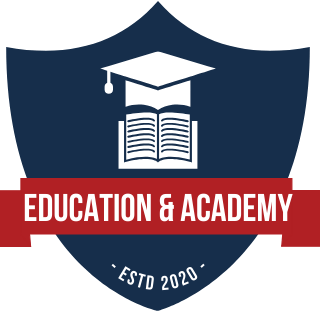Table of Contents
- Introduction
- 1. Formative Assessment
- 2. Summative Assessment
- 3. Diagnostic Assessment
- 4. Performance-Based Assessment
- 5. Peer Assessment
- 6. Self-Assessment
- 7. Observational Assessment
- Conclusion
- FAQs
Introduction
Assessing young learners in primary education is crucial for understanding their progress, strengths, and areas needing improvement. With a diverse range of assessment techniques available, educators can tailor their approaches to meet the unique needs of their students. In this article, we’ll explore seven effective assessment techniques that not only gauge student learning but also foster a supportive learning environment.
1. Formative Assessment
Formative assessment refers to ongoing evaluations during the learning process. Rather than waiting until the end of a term to assess understanding, teachers can gather insights through quizzes, class discussions, and informal observations.
Benefits:
- Helps identify learning gaps early.
- Encourages student engagement and participation.
- Provides immediate feedback for both students and teachers.
Example Techniques:
- Exit tickets: Simple questions answered at the end of a lesson.
- Think-pair-share: Students think about a question, pair up to discuss, and then share with the class.
For more on formative assessment, visit Edutopia.
2. Summative Assessment
Summative assessments occur at the end of an instructional unit and aim to evaluate student learning against standards. These assessments are typically more formal and can include end-of-term exams, standardized tests, or final projects.
Benefits:
- Provides a clear picture of student accomplishments.
- Helps in curriculum planning and improvement.
- Offers data for accountability purposes.
Example Techniques:
- Standardized tests: Assess learning across various schools and districts.
- Final projects: Allow students to demonstrate knowledge creatively.
For comprehensive insights on summative assessment, check out The Assessment Institute.
3. Diagnostic Assessment
Diagnostic assessments are pre-assessments that help identify students’ existing knowledge, skills, and potential learning challenges. This information is vital in planning effective instruction tailored to each student’s needs.
Benefits:
- Highlights students’ strengths and weaknesses.
- Informs personalized learning strategies.
- Reduces frustration by aligning instruction with learners’ capabilities.
Example Techniques:
- Pre-tests: Assess prior knowledge before starting a new topic.
- Skills checklists: Identify specific skills students may lack.
For guidelines on implementing diagnostic assessments, visit Understood.
4. Performance-Based Assessment
Performance-based assessments require students to demonstrate their knowledge and skills through real-world tasks. These can range from creating a project to conducting a presentation.
Benefits:
- Encourages critical thinking and problem-solving.
- Provides a practical context for learning.
- Engages students in active and meaningful learning experiences.
Example Techniques:
- Science experiments: Students conduct experiments and present their findings.
- Artistic projects: Create art pieces reflecting learned concepts.
For more on performance-based assessment, explore The Education Corner.
Visual Element:
| Technique | Description |
|---|---|
| Science Experiments | Hands-on activities to explore concepts |
| Artistic Projects | Creative expressions of learned material |
5. Peer Assessment
Peer assessment allows students to evaluate each other’s work, offering a unique perspective on learning and collaboration. This technique promotes a sense of community in the classroom and enhances critical thinking.
Benefits:
- Develops communication and critique skills.
- Encourages collaboration and teamwork.
- Fosters a deeper understanding of the subject matter.
Example Techniques:
- Peer reviews: Students provide feedback on each other’s assignments.
- Group presentations: Students assess each other’s contributions and teamwork.
For strategies on implementing peer assessments, visit Teaching Channel.
6. Self-Assessment
Self-assessment encourages students to reflect on their own learning and progress. This technique fosters independence and helps students take ownership of their educational journey.
Benefits:
- Builds self-awareness and responsibility.
- Encourages goal setting and personal reflection.
- Enhances motivation and engagement.
Example Techniques:
- Learning journals: Students maintain journals reflecting on their learning experiences.
- Checklists: Students assess their progress against a list of learning objectives.
For insights into effective self-assessment practices, explore Mindset Works.
7. Observational Assessment
Observational assessment involves teachers observing students during various activities to gather information about their skills, behaviors, and learning styles. This technique is particularly useful in early childhood education.
Benefits:
- Provides real-time insights into student engagement and understanding.
- Helps identify social and emotional development.
- Allows for a holistic view of the learner.
Example Techniques:
- Anecdotal records: Notes taken during observations of student behavior and learning.
- Checklists: Observing specific skills during activities.
For more on observational assessments, check out National Association for the Education of Young Children.
Conclusion
Incorporating a variety of assessment techniques in primary education not only enhances student learning but also supports teachers in creating effective instructional strategies. By understanding and utilizing these methods, educators can foster a more inclusive, engaging, and effective learning environment for all students. For insights into how these assessment techniques connect to broader educational trends, explore the historical developments of formal education in our article about the origin of formal education.
FAQs
1. What is the difference between formative and summative assessment?
Formative assessments are ongoing and aim to improve learning during the instructional process, while summative assessments evaluate student learning at the end of an instructional period.
2. How can I implement peer assessment in my classroom?
You can start by introducing clear guidelines on how to give constructive feedback and encouraging students to assess specific criteria related to their peers’ work.
3. Why is self-assessment important for students?
Self-assessment promotes reflection, responsibility, and independence, helping students understand their learning processes and set personal goals.
4. Can I use multiple assessment techniques simultaneously?
Absolutely! Using a combination of assessment techniques can provide a comprehensive understanding of student progress and cater to diverse learning styles.
5. What resources can help me learn more about assessment techniques?
Websites like Edutopia, Teaching Channel, and Understood offer a wealth of resources on assessment strategies.
By employing these assessment techniques, educators can create a dynamic and responsive learning environment that supports all primary education students. Happy teaching!



